Its been touted as the "Eden Project" of wildlife.
However, if you've been to the Eden Project, you'll know this project seems to fall short. Very short, in my opinion.
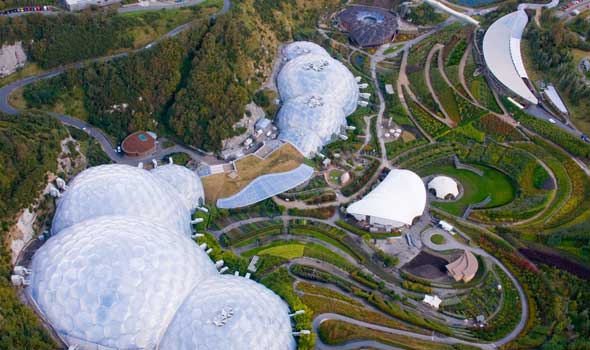
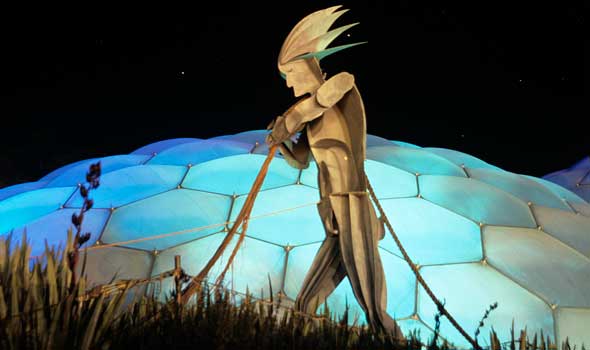 The Eden Project was, and is, as innovative in approach, as it was in design, made all that more impressive by the fact that botanical gardens and arboretia tend to be, well, on the more dull side. The Eden Project, built in a reclaimed clay mine, brought hip to gardens; it connects the reality of being green to the flashy, trendy movement. It creates a place to enjoy nature as an art, and art in nature, sometimes quite literally. It's also beautiful, fun, exciting, and a gorgeous piece of architecture and landscape architecture.
The Eden Project was, and is, as innovative in approach, as it was in design, made all that more impressive by the fact that botanical gardens and arboretia tend to be, well, on the more dull side. The Eden Project, built in a reclaimed clay mine, brought hip to gardens; it connects the reality of being green to the flashy, trendy movement. It creates a place to enjoy nature as an art, and art in nature, sometimes quite literally. It's also beautiful, fun, exciting, and a gorgeous piece of architecture and landscape architecture.
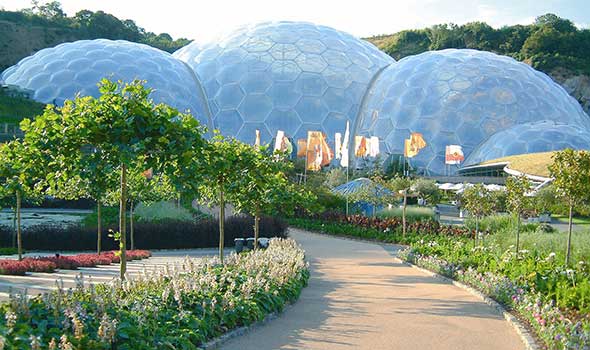
Bristol Zoo's "Eco-Zoo", which was conceived over 40 years ago and since shelved, claims to become "the first conservation-led animal visitor attraction of its kind in the UK." The $140 million Park is planned at 136 acres, and aims to be open by 2012, a lofty goal considering it hasn't yet been approved. The Park estimates attendance at 400,000 annually.
Touting itself as the "next generation of zoological attractions", I'm especially curious at what it aims to do differently. The single article I could find about it outlines a few key points:
1. "Bristol's "eco zoo" could connect the inherent interest value of captive animals with the conservation methods needed to save their wild cousins."
2. "The whole idea of captivity will be reduced to a minimum....The often controversially cramped spaces of the Victorian era's most famous zoos are gone – replaced with open land, moats and ditches."
3. "...most importantly, the four themed areas of the park...have all been chosen to reflect specific areas of the world where conservation is desperately needed to save critically endangered species. "


So far, this sounds very similar to most zoos creating new exhibits across the U.S. and world. Victorian era design died in the Victorian era, and as illustrated in a previous post, the idea of landscape immersion has been around since the 1970s. Creating themed areas based on conservation needs is what is done with virtually every new exhibit out there. What of all of the recent and upcoming Arctic exhibits? Bronx Zoo's Madagascar!? I'm duly unimpressed thus far...
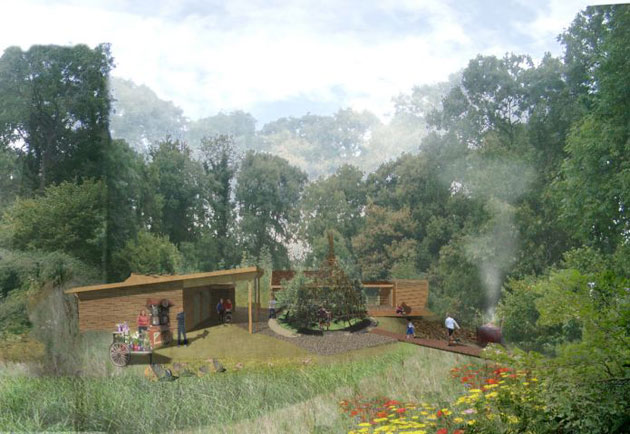
- The Eco-Zoo's British Woodland Exhibit

But then there's this:
"Food for the animals will be organic, while 80 per cent of the building material will be locally sourced and sustainable. "
And this:
"Every aspect of the park's design incorporates sustainability, from the buildings and the engineering infrastructure to the landscape."
Now that's new. Seriously, folks. Zoos tout themselves as conservation leaders, but are some of the most un-green institutions out there. Tremendous amounts of water and electricity are wasted daily on washout of stalls and sustaining water life support systems in tanks and pools, amongst other things.
Buildings themselves are most often behind the scenes and often suffer from the smallest budget. For this reason, environmentally friendly alternative building practices rarely are integrated. Recently, however, some zoos have been making an effort with their "non-animal" buildings, such as the LEED silver certified Nutrition Center at St. Louis Zoo.
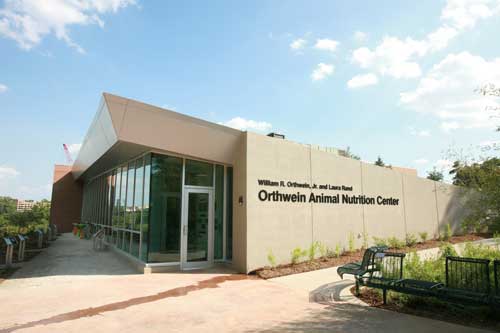
Speaking of the infamous LEED (Leadership in Energy and Environmental Design) Accreditation, no standards exist for buildings housing animals. So, zoos and aquariums looking to do right by the environment through LEED (and gain a little good press and grant money, too), are oftentimes without means. In the non-profit sector (as in many others), if you can't gain revenue or attendance increases from something, it isn't done. And there goes the green leadership...
However, if this project can put their money where their mouth is (almost literally!), they may be onto something special. If not for innovation in zoological exhibit design, then definitely for innovation in zoological construction and green design.
I'll be keeping my eyes peeled for more news about this potentially exciting project.



















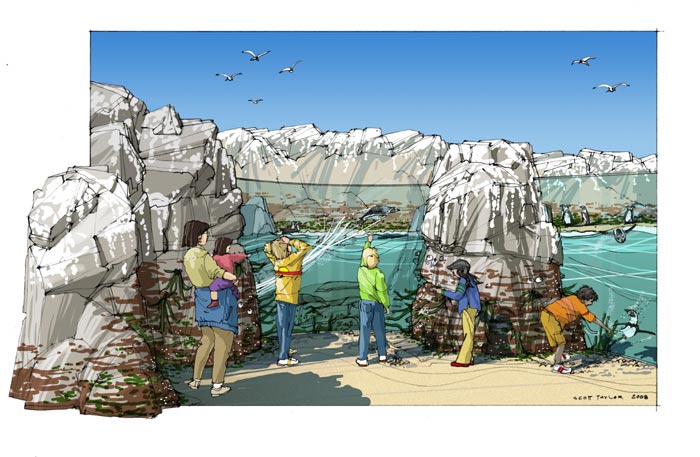
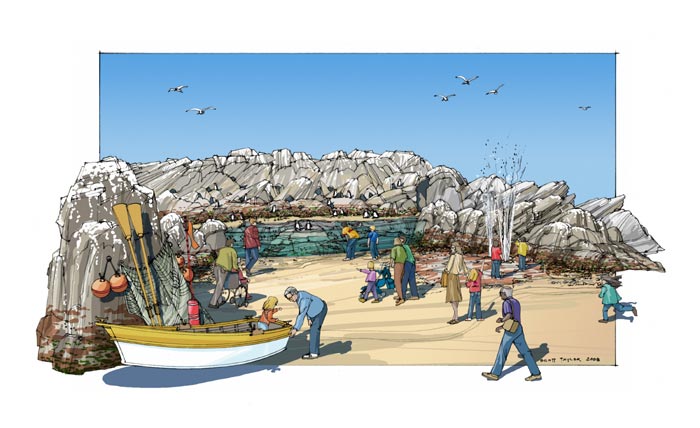
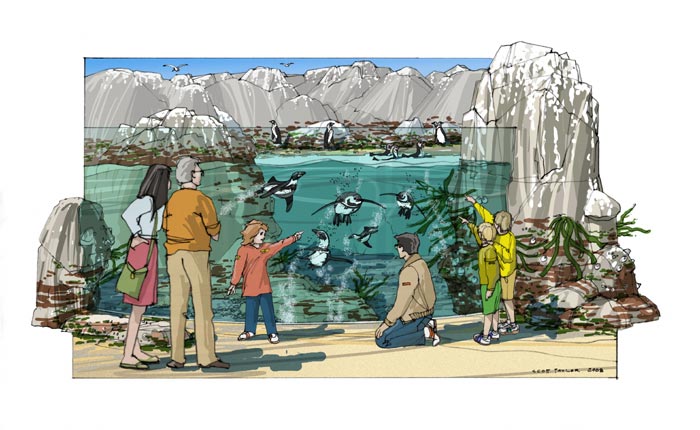
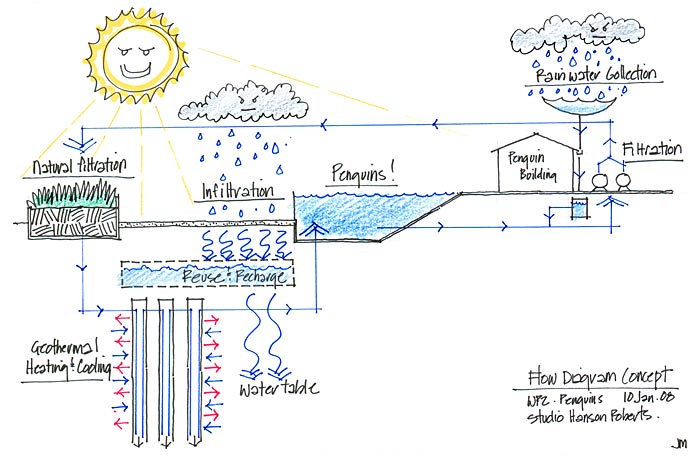
 Kansas City Zoo has been workly lately to give itself a face-lift. The Zoo, considered by locals to be the "red-headed step kid" to the world-famous St. Louis Zoo (a mere 3 hours' drive away), has seen less and less support in recent decades. To counter this, the Zoo has set about new construction and renovations projects throughout the facilty.
Kansas City Zoo has been workly lately to give itself a face-lift. The Zoo, considered by locals to be the "red-headed step kid" to the world-famous St. Louis Zoo (a mere 3 hours' drive away), has seen less and less support in recent decades. To counter this, the Zoo has set about new construction and renovations projects throughout the facilty.
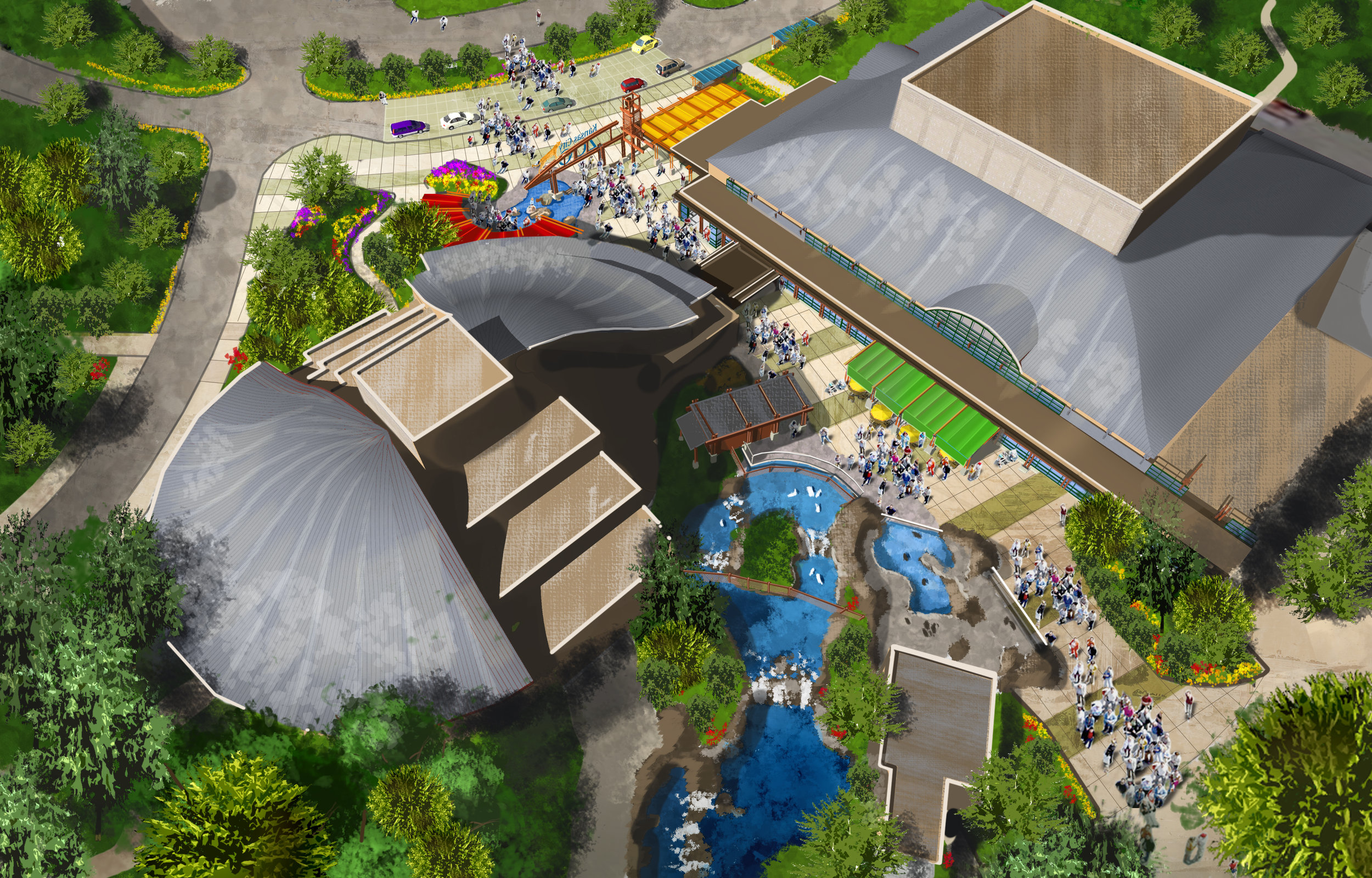


 As pointed out in a comment on Bristol Zoo's Eco Park, Chester Zoo has just unveiled a comparative project. Very little in the way of imagery is available, but this project seems to mimic the Eden Project in its use of a bio-dome to create a simulated African rainforest.
As pointed out in a comment on Bristol Zoo's Eco Park, Chester Zoo has just unveiled a comparative project. Very little in the way of imagery is available, but this project seems to mimic the Eden Project in its use of a bio-dome to create a simulated African rainforest. 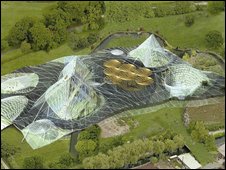

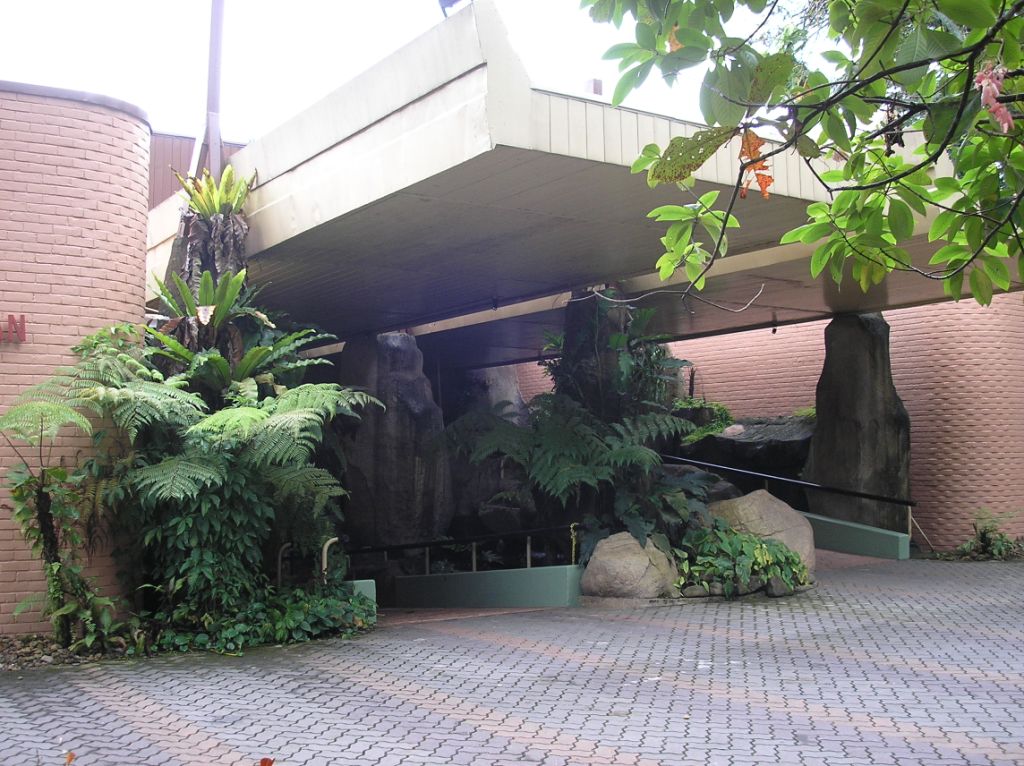
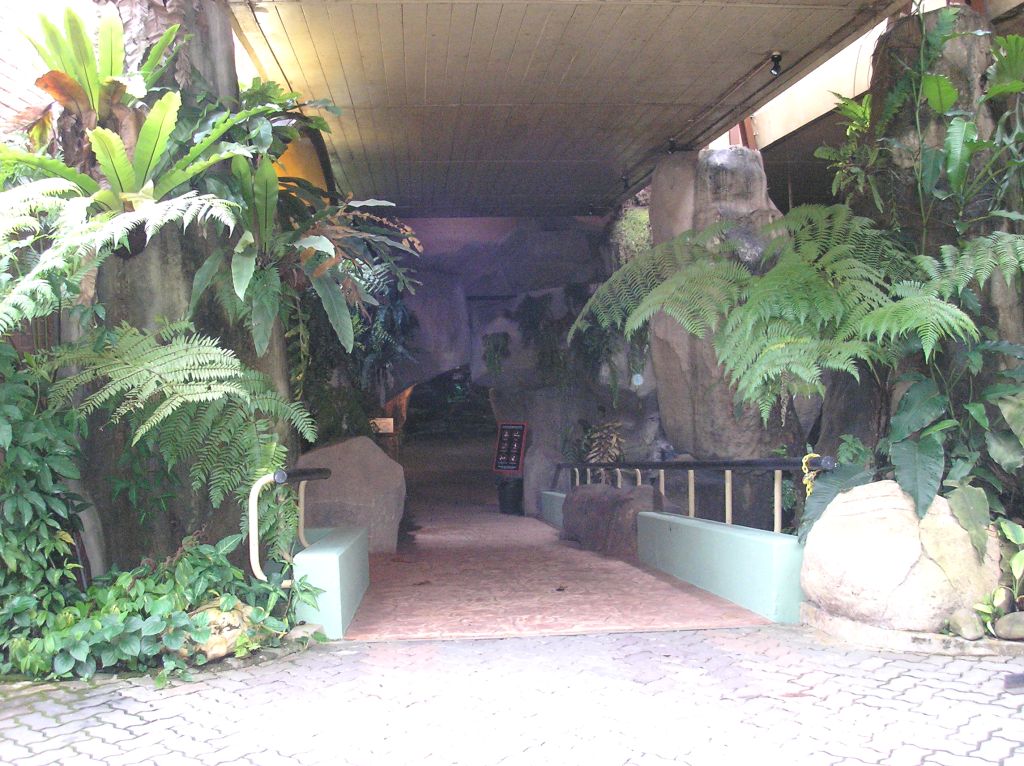



 The Eden Project was, and is, as innovative in approach, as it was in design, made all that more impressive by the fact that botanical gardens and arboretia tend to be, well, on the more dull side. The Eden Project, built in a reclaimed clay mine, brought hip to gardens; it connects the reality of being green to the flashy, trendy movement. It creates a place to enjoy nature as an art, and art in nature, sometimes quite literally. It's also beautiful, fun, exciting, and a gorgeous piece of architecture and landscape architecture.
The Eden Project was, and is, as innovative in approach, as it was in design, made all that more impressive by the fact that botanical gardens and arboretia tend to be, well, on the more dull side. The Eden Project, built in a reclaimed clay mine, brought hip to gardens; it connects the reality of being green to the flashy, trendy movement. It creates a place to enjoy nature as an art, and art in nature, sometimes quite literally. It's also beautiful, fun, exciting, and a gorgeous piece of architecture and landscape architecture.

















 Recently opened Dubai Aquarium, inside the gargantuan Dubai Mall, set the new Guiness World Record for "World's Largest Acrylic Panel" this November.
Recently opened Dubai Aquarium, inside the gargantuan Dubai Mall, set the new Guiness World Record for "World's Largest Acrylic Panel" this November.
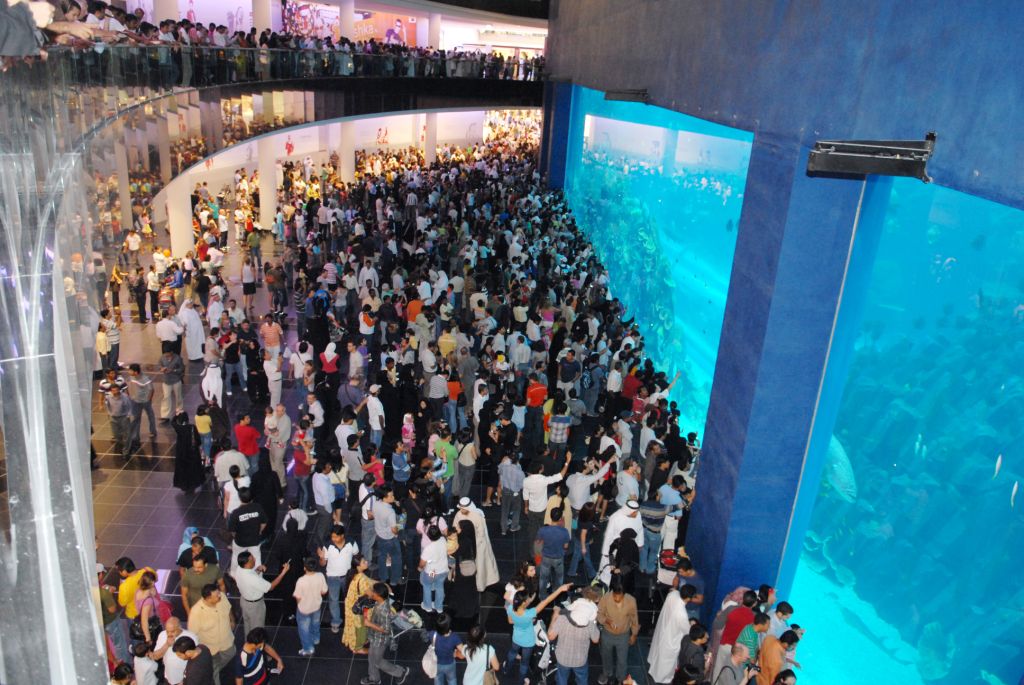
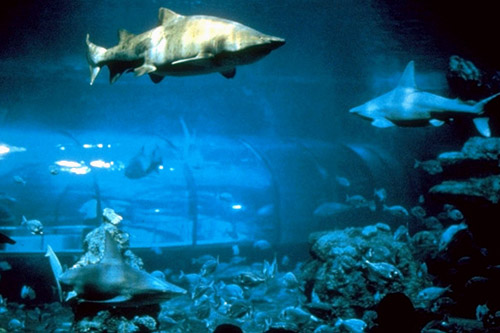
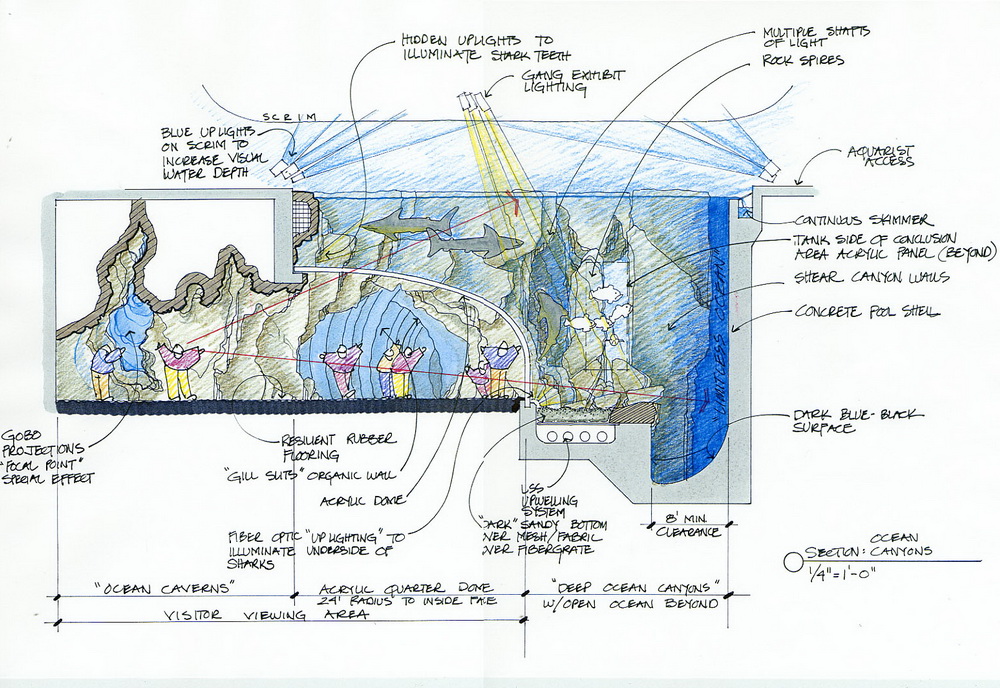
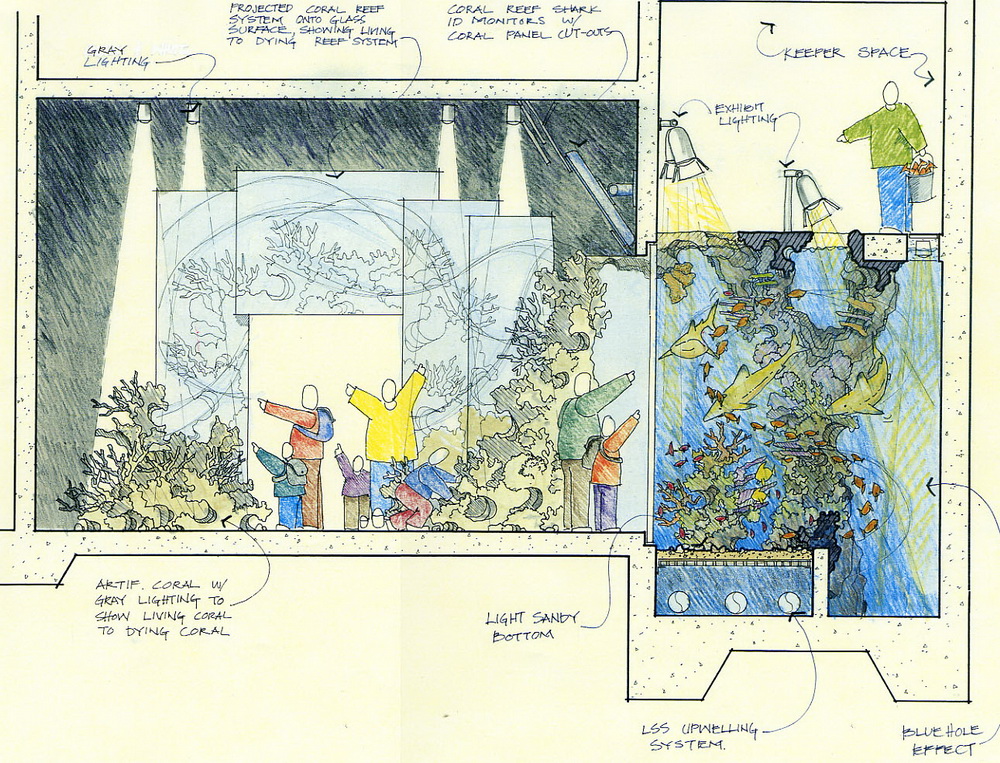


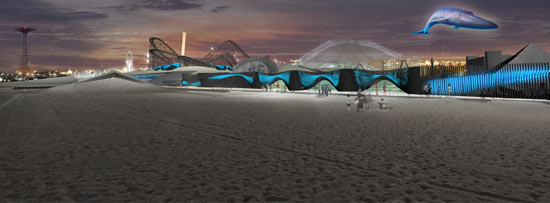
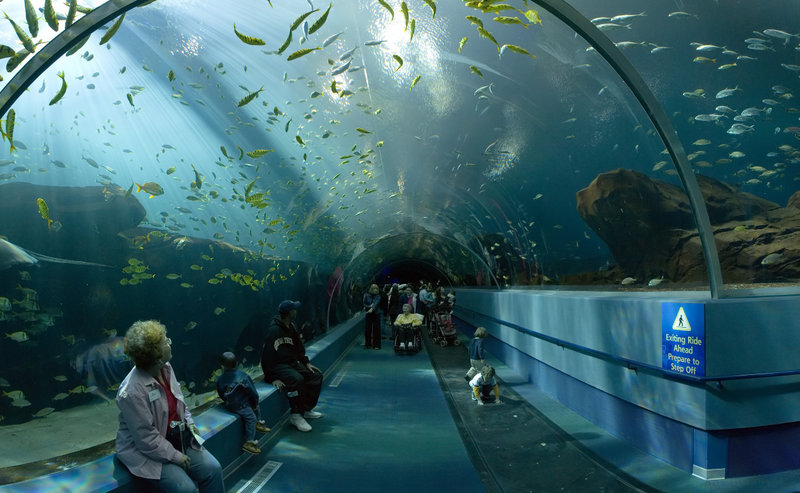
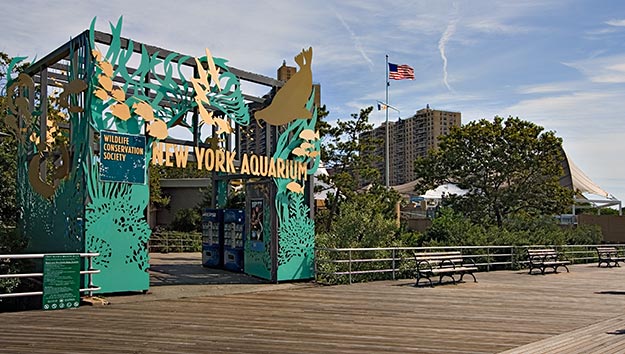 All of those plans are now moot, though, as the New York state government is proposing 55%
All of those plans are now moot, though, as the New York state government is proposing 55% 


















